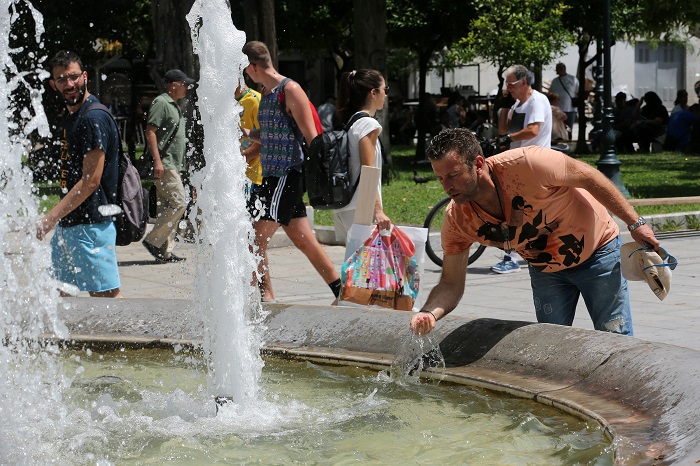Extreme weathers sweep across globe
Published : 12 Jul 2017, 23:16
This July extends the spell of "extreme weather" across the globe that continues to rage as summer sets in.
High temperatures in Northern Hemisphere have heated up this summer. In addition to that, other extreme forms of weather have also affected many different parts of the world in June and early July. Heatwaves and heavy rains have tested this planet in turns.
HEAT GRIPS NORTHERN HEMISPHERE
June 21 marked the summer solstice -- the longest day of the year -- when temperatures in many parts of Europe hit 35 degrees centigrade, and the Alps witnessed 30 degrees centigrade.
The hot, dry weather is a major factor behind forest fires that killed 62 people in Portugal even before June solstice, while temperatures are also much above average and high in east Siberia and far east regions.
In North America, extreme heat is scorching the American West and western Canada. U.S. city Phoenix in Arizona has seen multiple record-breaking heatwaves produce temperatures of nearly 50 degrees centigrade. A high temperature record that stood for 131 years in Los Angeles was broken by the blistering heatwave.
People have to hold hot steering wheels with gloves and dogs even wear coverings to protect their paws from the scorching pavement.
The high temperatures have contributed to other extreme weather events. Almost 200 wildfire broke out and quickly spread in U.S. California and Canadian province of British Columbia (BC), leaving thousands of homes at risk and forcing evacuations. BC is under a province-wide state of emergency as it battles over 180 wildfires.
HEAVY DOWNPOURS
A storm on Sunday night lashed Paris with the highest rainfall ever recorded in the French capital, flooding streets and briefly forcing the shut-down of metro stations.
A rain of 4.9 centimeters fell in one hour, equivalent to three weeks' rainfall in an average July. The national weather service Meteo France placed 12 departments, including those in great Paris region, on a 24-hour "orange alert" for heavy rains and electrical storms.
In the south of Japan, the death toll from heavy rains and flooding has risen to 20 while more than 20 remain missing, local media reported on July 9. Japan's weather agency Monday warned of continued heavy rains and mudslides in north Kyushu, the southernmost of Japan's four main islands.
Japanese Chief Cabinet Secretary Yoshihide Suga said in a press briefing on the matter that a quick decision will be made as to whether the government will designate the calamity a "severe disaster" in which case government subsidies for reconstruction and restoration will be made available.
The monsoon season brings 80 percent of its annual rainfall as well as extreme weather to India, which runs between June and September. At least 19 people were killed in separate lightning strikes in Bihar and Uttar Pradesh while mudslides claimed 27 lives in northeastern India.
Flooding and landslides in India's northeastern state of Assam have affected over 13,000 people, state-run broadcaster All India Radio said Wednesday. The Assam State Disaster Management Authority said 1,096 villages were inundated and more than 41,000 hectares of crop area have been damaged in the floods.
EXCEPTIONALLY WARM 2017
Rounding up the record temperatures set in the past two months, the World Meteorological Organization (WMO) said the Earth was experiencing "another exceptionally warm year" and the heatwaves were unusually early.
According to the WMO, the trend seen during the past two months has put average monthly global temperatures among the highest ever recorded since data began to be collated in 1880.
"Parts of Europe, the Middle East, North Africa and the United States of America have seen extremely high May and June temperatures, with a number of records broken," the WMO said.
Half a degree centigrade of global warming has been enough to increase heatwaves and heavy rains in many regions of the planet, according to a recent study published in the journal Nature Climate Change. Comparing two 20-year periods between which average global temperatures jumped 0.5 degree centigrade, scientists found that several kinds of extreme weather gained in duration and intensity.
The study found that nearly one in three of the world's people were already exposed to potentially deadly heatwaves and predicted that number would rise to nearly half by the end of the century unless governments take steps to aggressively reduce climate-changing emissions.
"People are talking about the future when it comes to climate change, but what we found from this paper is that this is already happening," said Camilo Mora, geography professor at the University of Hawaii at Manoa and lead author of the study, "and this is obviously going to get a lot worse."


